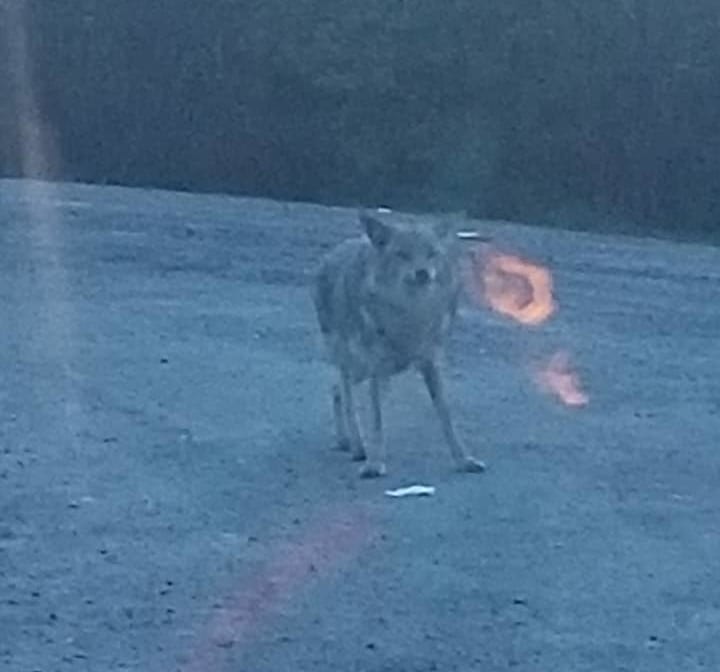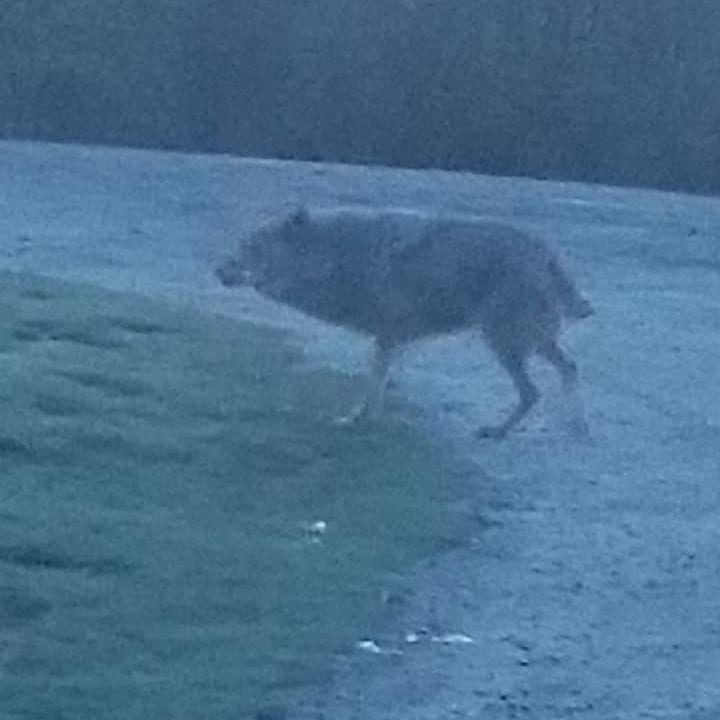They breed prolifically, eat almost anything and live just about anywhere. You can find them in grasslands, forests, deserts and even in Yellowknife's Rotary Park, apparently.

Yellowknife resident Alf Silke snapped a few photos of a plump looking canine with a stubby tail on June 15.
"Wolf? spotted at the seagull feeding spot south of Rotary Park about 1:30 AM June 15. It has a short stub of a tail and looks very stocky. Pardon the grainy pictures; low light conditions," stated Silke in a Facebook post.
Yellowknifer asked Dean Cluff, regional biologist for the North Slave region, to identify the animal and he says it's "definitely" a coyote.
"It has all of the distinct features of a coyote," he said. "Usually the tail is a lot longer than that. That's probably half the length. It probably got caught somewhere, or bit off, or shot off, who knows?"
Cluff said coyotes are fairly uncommon in Yellowknife, but not unheard of.
In 2005, Cluff published an article in a science journal called the Canadian Field-Naturalist about how these wily wanderers have roamed so far north.
"Coyotes have resided in the Northwest Territories for several decades but have only rarely been sighted north of Great Slave Lake in the Taiga Shield ecozone. Records show coyotes have been seen since the 1960s," it states. "Prior to 2000, evidence of coyotes breeding in the Taiga Shield has been anecdotal."
In 2000, a coyote was seen at the Yellowknife airport and a breeding pair was observed with two pups in 2001, states the article. Since then, coyotes have been seen regularly within the City of Yellowknife.
Coyotes are very adaptable animals and it is unsurprising they would set up shop so close to town, said Cluff.

"They've responded well to the changes in the landscape due to people," he said. "They can live among people and appear to be small enough that they don't have to eat large animals. They can survive on rodents, small mammals and garbage from people."
Coyotes are usually wary of people and will avoid us whenever possible but people should never attempt to feed the animals, said Cluff.
"We basically live in the bush and the coyotes have come here to stay," he said.


